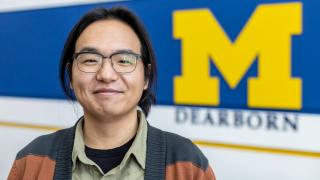
Department of Health and Human Services Chair Patricia Wren lovingly refers to her department’s new HHS 100 class and as the “sex, drugs and rock ‘n’ roll” of the catalog. It’s a decent shorthand given the material: Browse the syllabus and you get a picture of a semester-long tour through a gauntlet of health and wellness topics — from sexual health and addiction to cardiovascular disease and stress management.
The hope, among other things, is to deliver a timely dose of practical wisdom at a time when many students are developing some consequential lifestyle habits. And for Lecturer Bonnie McIntosh, the public health instructor shepherding about 40 students through the course’s debut semester, the logical place to start was with the latest science.
“Making good decisions obviously depends on having accurate information,” McIntosh said. “And the thing about the health fields is that the information is constantly evolving. We are continuously learning about new treatments, new ways to diagnose diseases, risk factors, new guidelines — and even how that new information is leading to new policies.”
In fact, McIntosh’s approach to the course challenges students to see health issues through a number of scientific lenses. Join her at the start of a lecture, and the clinical sounding definitions and discussions of the latest medical research may leave you feeling like you’ve stumbled into a course for pre-med students. From there, things often get more personal, with discussions of things like risk factors and personal behaviors that can lead to better health. And by the end, students are living fully in the public health universe — exploring how the disease issues they’ve learned about are shaped by multiple factors.
The result is a nuanced portrait of health as something that’s at once objectively medical, highly personal and often social. It’s an interesting approach in its own right, but McIntosh said it’s also a great fit for intro courses, which tend to attract students from many different academic backgrounds. “When you have a class this diverse, you try to create lots of entry points so there’s something for everyone,” she said. In this case the pre-med students get their dose of hard science; the public health students can get their epidemiology fix; and everyone benefits from practical ideas for living healthier lives.
For freshman Dina Kanso, some of those ideas arrived right on time. The 18-year-old has had a busy first semester balancing 15 credits with her first job, which piles on another 20 hours a week in obligations. She said she’s picked up some valuable time management skills in the class. And the section on stress is helping her not get overwhelmed when it feels like there aren’t enough hours in the day.
“One of the dimensions of wellness we learned about is spiritual wellness, and for me, that’s helped me stay positive,” Kanso said. “ Like, say, if I wasn’t able to study as much for a test as I wanted to, I’m getting better at not dwelling on it. Back in high school, I felt like that would keep me down for a week. But I’ve learned to say ‘this is the best I can do, given the time that I have, and I can’t change what’s already done."
For junior Tamera Smith, the biggest takeaways have also been the ones that hit close to home. Type II diabetes runs on her mother’s side of the family, and the class discussion of diabetes has led to some interesting conversations with her mother about managing her several interconnected medical conditions.
“I even decided to go to the doctor recently and get some tests done to see if I had any early warning signs,” Smith said. “So I’ve learned a lot in class about how I can cut my own risks by making sure I’m eating right and getting enough exercise. For me, and my health, I want things to be a lot different.”





